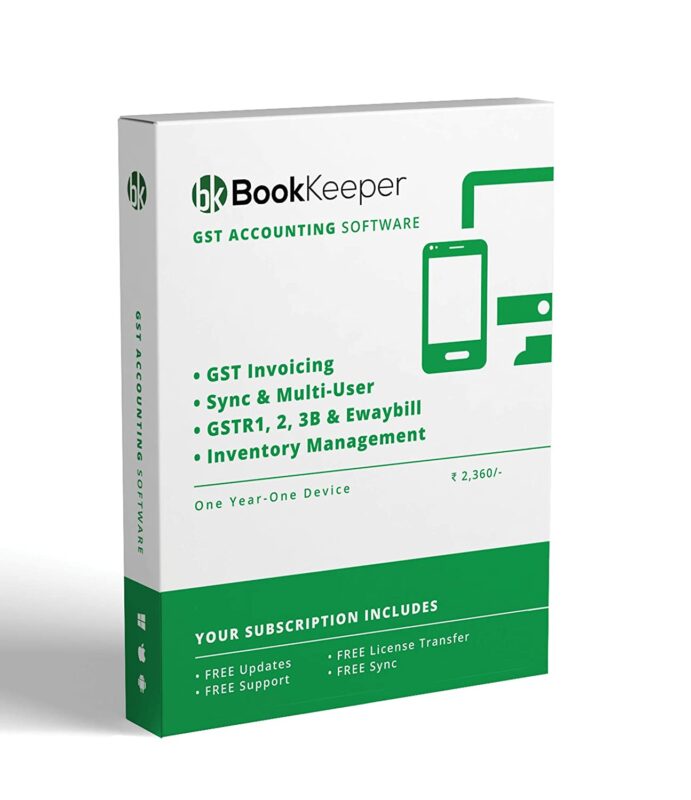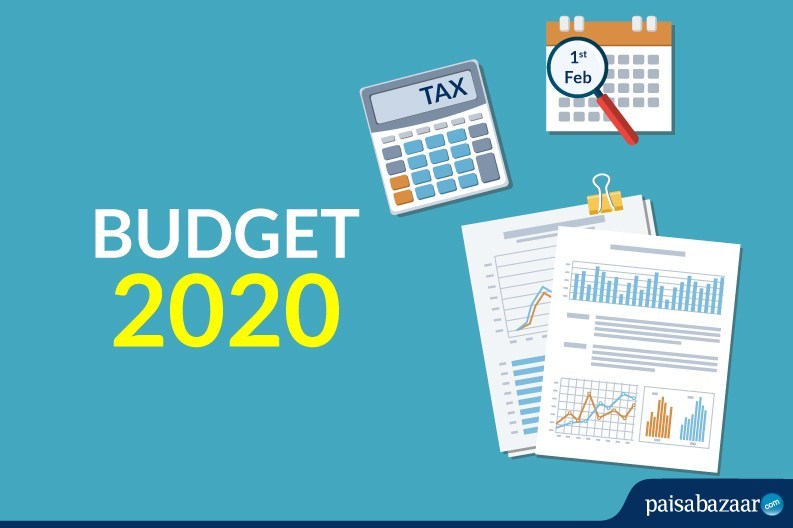Tally Solutions
Budget 2020- Key Highlights and Changes in FY ‘21
Budget 2020- Key Highlights and Changes in FY ‘21
The budget 2020 took place in Lok Sabha yesterday, headlined by honourable finance minister Nirmala Sitharaman. This is the second budget after Narendra Modi led National Democratic Alliance returned to power for a second term. The 3 major ideas around which this year’s budget revolved around were: Aspirational India, Economic development, A Caring Society.
Here are the key highlights of Budget 2020!
New income tax slabs and rates
In a bid to simplify the income tax compliance and provide relief to salaried taxpayers, the finance minister proposed new income tax slabs and lower rates. According to new income tax rates, a person earning 15 lakhs in a year and not claiming any deduction, will lead a tax liability of 1.95 lakh which is 78,000 lesser compared to the current rates. But here’s a catch! To avail this, you have to forego various deductions and exemptions claimed so far. Budget 2020- Key Highlights and Changes in FY ‘21
Let’s take a look at new tax slabs and rates.
|
Taxable Income Slab (In Rupees) |
Existing Tax Rates |
New Tax Rates |
|
0-2.5 lakh |
Exempt |
Exempt |
|
2.5-5 lakh |
5% |
5% |
|
5-7.5 lakh |
20% |
10% |
|
7.5-10 lakh |
20% |
15% |
|
10-12.5 lakh |
30% |
20% |
|
12.5-15 lakh |
30% |
25% |
|
Above 15 lakh |
30% |
30% |
The new tax regime is optional and is available to those who are willing to forego exemptions and deductions. Depending upon the individual’s investment/savings and deductions claimed, one can choose the new tax rates, if it is beneficial or continue to pay the tax under the existing slabs.
For example, If the taxpayer claims deductions for Rs 2.5 lakh (Rs 50,000 standard deduction, Rs 1.5 lakh under 80C and Rs 50,000 contribution to NPS), his tax will not change. If he also claims house rent allowance (HRA) exemption or home loan interest deduction of Rs 2 lakh, his tax in the old regime would be lower by Rs 46,800. Budget 2020- Key Highlights and Changes in FY ‘21
To cut the long story short, an individual who is claiming more exemptions and deductions may continue to pay taxes in the current tax slabs. Those who have availed fewer exemptions or no deductions will significantly benefit with lesser tax liability under the new tax rates. Budget 2020- Key Highlights and Changes in FY ‘21
What’s out?
Some of the 70 exemptions and deductions you won’t get in a new regime which includes: Budget 2020- Key Highlights and Changes in FY ‘21
- Section 80C investments
- House rent allowance
- Housing loan interest
- Leave travel allowance
- Medical insurance premium
- Standard deduction
- Savings bank interest
- Education loan interest
What stays?
Some 50 tax exemptions have been left untouched. These include.
- Standard deduction on rent
- Agricultural income
- Income from life insurance
- Retrenchment compensation
- VRS proceeds
- Leave encashment on retirement
Medium, Small and Micro Enterprises
In order to reduce the compliance burden on the MSME’s, the finance minister has increased the turnover threshold for audit to 5 Crores. This threshold increase is 5 times from current 1 crore to 5 crores.
The increased limit shall apply only to those businesses which carry out less than 5% of their business transactions in cash. Currently, businesses having turnover of more than Rs 1 crore are required to get their books of accounts audited.
For start-ups
Stating ‘Start-ups have emerged as engines of growth for Indian economy’, the finance minister has proposed to ease the burden of taxation on the employees by deferring the tax payment on Employee Stock Option Plan (ESOPs ) by five years or till they leave the company or when they sell their shares, whichever is earlier. Budget 2020- Key Highlights and Changes in FY ‘21
This will be a huge boost to the start-up eco-system since they generally use the Employee Stock Option Plan (ESOP) to attract and retain highly talented employees. ESOP is a significant component of compensation for these employees. Budget 2020- Key Highlights and Changes in FY ‘21
In addition, the turnover threshold for claiming 100% profit deduction is increased from 25 crores to Rs 100 crores. In line with this, the eligibility period for claiming the deduction is increased from the existing 7 years to 10 years. This is beneficial in 2 ways. One is the inclusion of a larger start-up in the ambit and second, even when the new one grows, the benefit can still be availed with the increase in eligibility period to 10 years. Budget 2020- Key Highlights and Changes in FY ‘21
Concessional tax rate for co-operative societies
In order to bring the parity between the co-operative societies and corporates, the finance minister has proposed to provide an option to cooperative societies to be taxed at 22% plus 10% surcharge and 4% cess with no exemptions/deductions. Currently, they are taxed at a rate of 30% with surcharge and cess. Budget 2020- Key Highlights and Changes in FY ‘21
It is also proposed to exempt these societies from Alternative Minimum Tax (AMT), just like companies under the new tax regime are exempt from the Minimum Alternate Tax (MAT).
TDS on Payment
New sections of deducting TDS on payments is introduced. For certain sections, along with TDS, surcharge as specified should be deducted. Also, the interchangeability of PAN/Aadhar for TDS calculation is introduced.
The following are the key changes related to TDS on payments.
New Sections
- TDS @ 10% on income of a resident in respect of a dividend received from Domestic Companies, Mutual funds units, or unit of specified undertaking or company as defined it UTI Act, 2002, if payment exceeds Rs 5,000
- E-commerce operator shall deduct TDS on all payments or credits to e-commerce participants at the rate of 1% in PAN/Aadhaar cases and 5% in non-PAN/Aadhaar cases. It is also proposed to provide an exemption to an individual and HUF who receives less than Rs. 5 lakh and furnishes PAN/Aadhaar Budget 2020- Key Highlights and Changes in FY ‘21
Changes to existing sections
- The threshold limit of payment of dividend for a non-resident party has been changed to Rs 5000
- Large co-operative society turnover exceeding 50 crores shall deduct TDS on interest paid if the amount of interest exceeds Rs 50,000 in case of a senior citizen or Rs 40,000 in any other case
- TDS in case of technical services has been reduced to 2% for present 10%
- TDS rate shall be four per cent on fresh overseas borrowing on or after the 1st day of April, 2020 but before the 1st day of July, 2023 which is listed only on a recognised stock exchange located in any IFSC
- The concessional rate of TDS at five per cent currently available for borrowing from overseas is proposed to be extended for three years to 30th June 2023 Budget 2020- Key Highlights and Changes in FY ‘21
Surcharge on TDS
For specified sections, the deductions shall be made at the rates notified for those sections and shall be increased by a surcharge as given below:
|
Income |
Surcharge |
|
In case of Individual/HUF (NR) |
|
|
Income above Rs 50 lakh but below Rs 1 Crore |
10% |
|
Income above Rs 1 Crore but below Rs 2 Crore |
15% |
|
Income above Rs 2 Crore but below Rs 5 Crore |
25% |
|
Income above Rs 5 Crore |
37% |
|
In case of Co-operative society or firm (NR) |
|
|
Income above Rs 2 Crore |
12% |
|
In case of every company (NR) |
|
|
Income above Rs 1 Crore but below Rs 10 Crore |
2% |
|
Income above Rs 10 Crore |
5% |
TCS
- PAN/Aadhar interchangeability for TCS calculation
- TCS @5% on foreign remittance, exceeding Rs 7 lakhs, through LRS and on the selling of overseas tour packages
- TCS is also proposed on sale of goods in excess of fifty lakh rupee in a year by a seller whose turnover is more than the crore rupees in the previous year shall be liable to deduct TCS on the sale of goods @ 0.1% and (1% in case of non-PAN/AADHAR case).
- Similar to TDS, surcharge will be applicable for specific sections
For manufacturing
The finance minister has proposed to introduce a scheme focused on encouraging the manufacture of mobile phones, electronic equipment and semiconductor packaging. It is also proposed to encourage the private sector to build Data Centre Parks throughout the country
Things that will become dearer
- Customs duty on walnuts raised to 100% from 30%
- Customs duty on autos and auto parts raised by up to 10%
- Customs duty on platinum and palladium cut to 7.5% from 12.5% for certain purposes Budget 2020- Key Highlights and Changes in FY ‘21
- Nominal health cess of 5% on import of medical devices
Other highlights of budget 20-21
- ₹80 billion ($1.13 billion) over five years to be provided for quantum technologies and applications
- Sub-urban rail will boost multi-modal connectivity and open up new economic opportunities for areas in and around cities like Bengaluru, said Ola Mobility Institute Budget 2020- Key Highlights and Changes in FY ‘21
- Custom duty on fan upped to 20% vs 10%. Custom duty on specified goods used in refrigerators & ac hiked to 12.5% vs 10%
-
Policy to allow the private sector to build data center parks could potentially benefit all IT firms. Budget 2020- Key Highlights and Changes in FY ‘21























